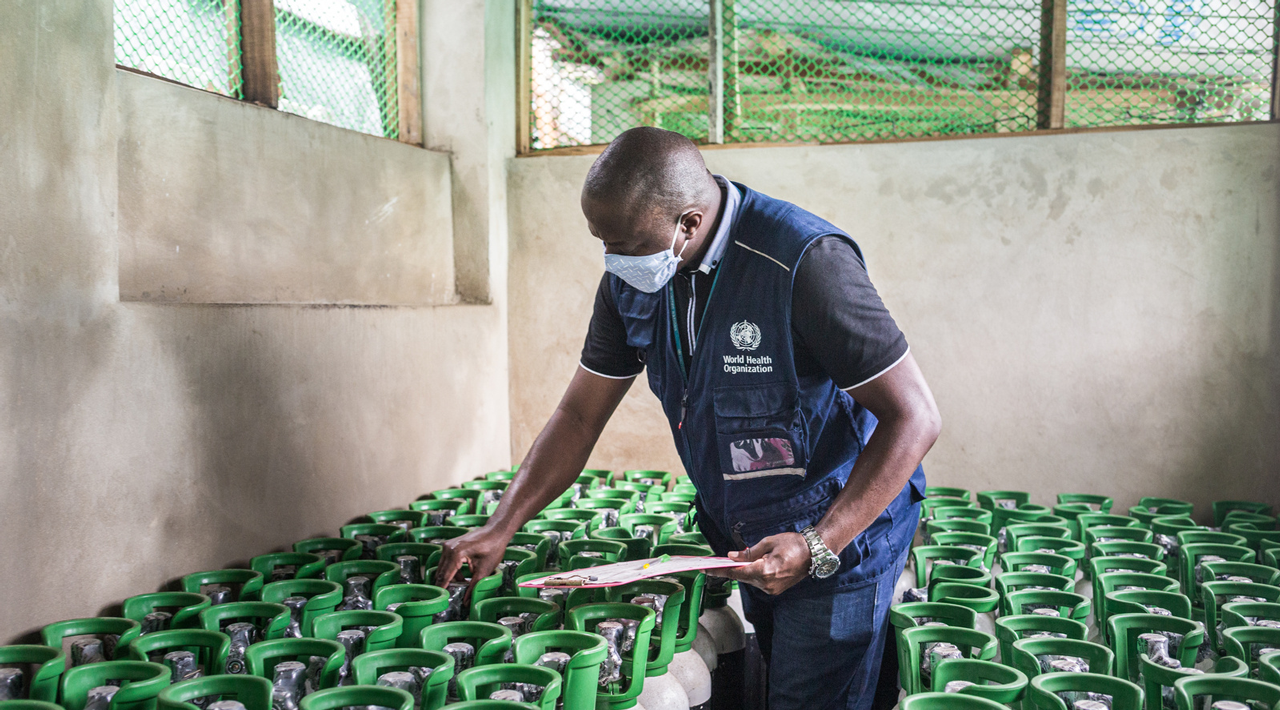Biomedical activities to strengthen COVID-19 case management
The COVID-19 pandemic has highlighted the need for oxygen and other respiratory care supplies and equipment. A consultant has been hired by the Infectious Hazard Management (IHM) team in the Health Emergencies programme of the WHO South-East Asia Regional office to provide technical support to the regional office and Member States for oxygen delivery devices; compile available trusted reference resources and materials for oxygen/respiratory care equipment; develop a data collection tool to collect data related to medical devices, including oxygen and respiratory care equipment; finalize a database system; and global nomenclature system for medical devices.
As of 15 October 2021 the following activities have been undertaken in this regard:
Compiling all available and trusted reference resources and materials related to oxygen/respiratory care equipment:
In light of the fact that there are a large number of guidelines and resource materials that have been developed and published by WHO, several UN agencies like UNICEF, PATH and others, an attempt has been made to categorize them in a systematic manner for use by the research community as well as policy-makers, biomedical engineers and technicians and health care practitioners. These resources will be updated regularly and will become part of the IHM online repository (being developed) that can be used by Member states.
Reviewing the SEARO-Integrated Management of Adolescent and Adult Illness (IMAI) tool :
WHO-SEARO has developed a data collection tool for Member states to collect data related to medical devices, including oxygen/respiratory care equipment. The survey tool and guide to the SEARO-IMAI oxygen survey tool for district and regional hospitals aims to help both managers and clinicians analyze current and future oxygen needs. The tool is being reviewed with a view to advance and update it for harmonization among Member states, at least up-to the regional level. It takes into account the following aspects, which will continue to be updated on a regular basis:
- Check for any required information that needs to be added and updated
- Rearrange the values and fields if required
- Check the formulae used for calculation and correction and modify if required
- Check for the appropriate space required for the string of the information to fit in excel cell and rearrange if needed
- Check and make as easy as possible for the data collector to understand and collect data
- Check for the layout appropriate for printout/hardcopy and rearrange the rows, columns, cells etc if necessary.
Developing an exhaustive database system:
The WHO HQ has initiated an exercise aimed to develop the database system that serves as a forecasting tool for COVID-19 facilities. This will be like an inventory that includes medical devices, drugs, personal protective equipment and WashLog amongst others. In this regard, at the WHO SEAERO level, preliminary feedback, suggestions, opinions and comments are being collected. These will be analyzed for optimum usefulness, worthiness and sustainability of the database, from the user and management perspective.
Finalizing a global nomenclature system for medical devices:
WHO HQ is advocating for the harmonization of a nomenclature system and also coordinating with four existing global nomenclature system developer agencies. This is being done with the objective of selecting the best system which aligns itself most effectively with WHO’s expectations and requirements.

WHO is supporting COVID-19 preparedness and response for vulnerable Rohingya refugees and host communities in Cox’s Bazar, Bangladesh.
